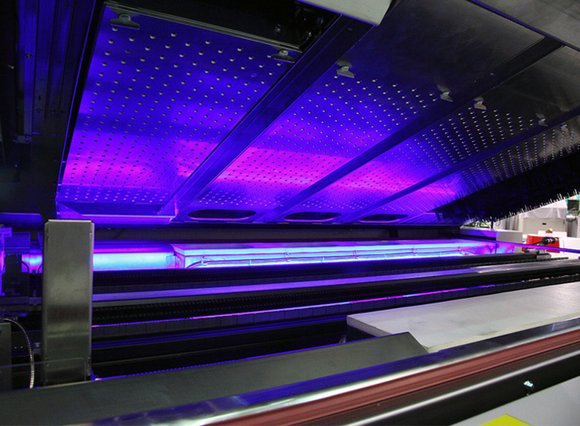The standard cooling system installed in all VisionX convection soldering systems consists of up to four individual cooling modules. These allow a precisely controlled cooling process as well as individual adjustment of the cooling gradient. In the cooling process, the air produced by the soldering process, which is very warm, is first sucked into the lower part of the system. It is then cleaned over several cooling modules and cooled to the desired temperature (usually below 20 °C). The air is then blown back from above onto the assembly, which results in the cooling. The “closed loop principle” guarantees a closed atmosphere cycle. The standard cooling section consists of active and passive cooling modules. The active cooling modules are supplied with water via a heat exchanger. The cooling filters can be easily cleaned and serviced at the rear of the system: the process chamber does not need to be opened to do this.
Gentle cooling with Power Cooling Unit
For gentle cooling, especially for complex assemblies, an extended cooling section ("Power Cooling Unit") can be connected to the VisionXP+. This can be implemented as an extension to standard cooling zones under a nitrogen atmosphere or as a separate, downstream module in an air atmosphere for higher cooling performance for insensitive materials. Advantage of the air-cooled variant: while nitrogen is needed in the process section of the convection unit to prevent oxidation, the extended cooling section no longer needs to be flooded with nitrogen, resulting in nitrogen savings.
Underside cooling for uniform cooling from above and below
For particularly massive or large assemblies or boards with product carriers, the VisionXP + can also be equipped with underside cooling. The actual cooling process is identical to that of the standard cooling section, but the extracted, cleaned and cooled air flows not only from above onto the module, but also from below.
Gradual cooling for energy saving
Rehm also offers an energy-saving cooling variant for the VisionXP+ convection soldering system: the air is extracted at several points rather than just one. This results in gradual cooling and offers significant energy saving potential.
Rehm CoolFlow: reduced energy usage with liquid nitrogen
Along with their partner Air Liquide, Rehm has developed a cooling system ("Rehm CoolFlow"), which uses the nitrogen used for inertia even more efficiently. The -196°C liquid nitrogen releases its energy in the cooling section, then evaporates and can then be used in its gaseous state for inerting the process atmosphere. The cooling water, which previously required high energy use for cooling, including cooling unit and refrigerant, is completely eliminated.
